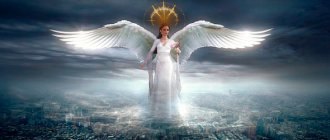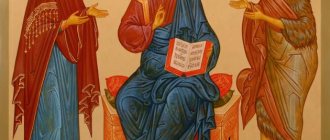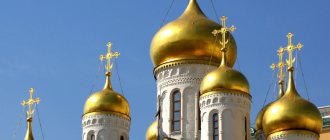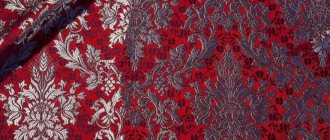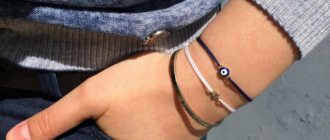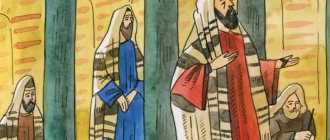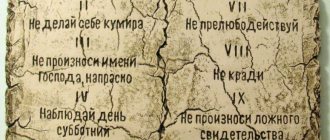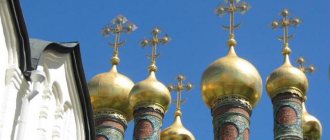The halo is something that is present in almost every religious culture. It represents an artistic depiction of radiance, holiness, purity.
Moreover, in different faiths, movements and various artistic forms, the luminous halo can be presented in any shapes and colors.
What is a halo in Christianity?
What does the halo mean above the head or around the image of the Face of God and the saints? And why are there so many variations of this symbol? The word "halo" has Latin roots and is translated as "cloud" or "shine." This term came into the Russian lexicon from the German language at the end of the 19th century. Before this, in Rus' the halo was called a “circle” or “corolla”.
Halo above the head of the Child Christ and the Virgin Mary (mosaics of Hagia Sophia, Istanbul)
In the art of Eastern Christianity, the halo is depicted as a vertical circle. This is a conventional image of the radiance around the head of the saint. It testifies to the holiness of a person who is transformed by Divine grace. In images of God, the halo shows His inherent grace.
The Catholic tradition has a slightly different understanding of the halo. In the art of Western Christianity it is represented as a horizontal ring or disk above the head of a sacred person. Such a halo can be depicted from different angles. It symbolizes the crown or crown with which the righteous is awarded from above. In Orthodoxy, a halo is a symbol not of an external reward, but of the enlightenment of the saint’s face coming from within, who has united with the Lord.
Master class on creating crafts
Making an angel at home is very simple.
- To begin with, you should place an A4 sheet of paper vertically in front of you, and now the sides of the sheet can be decorated or painted, if desired.
- Next, you need to make an accordion from this sheet.
- To make it even, the sheet is folded in half and unfolded back to indicate the middle.
- Then press the bottom of the sheet to the middle, that is, fold half of the sheet in half, then in half again and so on several times, the same is done with the top part.
- Now all the folds are even and you can fold the accordion.
- When folded, the sheet looks like a thin strip and it’s time to remember how we cut out snowflakes for the New Year.
- Draw a pattern on half of the strip and cut it out - this way the angel will turn out elegant. If you want minimalism, then a pattern is not necessary.
It's time to make the angel wings.
- To do this, the accordion should be unfolded and squeezed in the middle with your fingers, so that you get a bow, where the bottom (openwork with a pattern or simple) will be a skirt, but the top will serve as wings.
- After making an incision, the two resulting parts are bent in different directions, as shown in the photo of the angel, this is how wings are obtained.
All that remains is to make the head and halo of the angel.
- For the head you need a strip of paper, wrap it around your finger and glue it at one point, add layers, with an overlap on one side, as shown in the photo, thus creating a halo effect.
- For the neck, glue two small strips together halfway, spread the strips in different directions from the other edge and place the head between them.
- Place the neck part in the middle between the folds of the angel and secure with glue.
Origin of the halo
The halo is usually associated only with Christian culture. However, this symbol has its roots far back in antiquity, in the Hellenistic era. There are several theories about the origin of the halo. According to the first, this symbol comes from the menisci. This is the name given to the round metal plates that the ancient Greeks used to protect outdoor statues from rain and bird droppings.
Another version says that the halo owes its origin to the ancient tradition of hanging a shield on the back of heroes. According to the third theory, the halo was originally an attribute of pagan deities who personified the heavenly bodies. Later, this symbol began to be assigned to other deities, as well as to people who were worthy to be with them in heaven.
The most likely version is that the halo symbol originates from a specific folk belief of the ancient Greeks. They believed that the gods, taking human form, emit a dazzling radiance and reside in a cloud of heavenly ether. These folk ideas were reflected in ancient poetry and art. Since the unearthly radiance of the gods is difficult to convey through pictorial means (especially in a complex composition), artists limited themselves to its conventional depiction in the form of a halo.
The Flood happened because of the Fall of the Angels
Angels almost always appear to us as good creatures - messengers and servants of God. Even when they sow death, they are doing God's will. But according to one interpretation of biblical texts, angels are (at least partly) to blame for the global flood. And the flood destroyed all of humanity except Noah and his family.
The debate is taking place among Christians. In Jewish theology everything is much simpler. When God saw the corruption that had taken possession of his creatures, Hazael and Samsaveel voluntarily went to Earth to prove that people themselves are responsible for their own destiny. On Earth, they not only experienced earthly pleasures forbidden to angels: Samsaveel also violated one of the most sacred oaths - he revealed the true name of God to a mortal woman. He was not allowed to return to heaven, but the woman, Ishtar, was taken to the sky and left among the stars. Samsaveil repented of what he had done, but remained between Earth and heaven. In other versions, as many as 18 angels had intercourse with women and produced offspring.
But in both traditions, it was worldly sin that forced God to destroy everything he created, including the Nephilim giants - the descendants of his beloved angels.
Halo above your head: history of the symbol
From Ancient Greece, the halo symbol passed into the culture of Rome, Egypt and Hellenistic Asia. Therefore, the halo gradually penetrated the artistic traditions of many civilizations. For example, in Islam, many personalities, not necessarily saints, were depicted with him. In ancient times, the Islamic halo was depicted as a flame around the head or entire figure of a sacred person. The fiery halo testified to divinity and holiness. Later, flat round halos with which rulers were depicted also entered the tradition. This emphasized the formality and solemnity of the portrait.
In Byzantium, the halo was used in images of royalty. In Buddhism, a halo symbolizes spiritual power and can be blue, yellow or rainbow. The halo symbol is also present in Hinduism. The deity Shiva is depicted in a halo of flame, symbolizing space.
Christians began depicting the Savior with a halo in the 4th century. At that time, the followers of Christ were forced to secretly hold services in the catacombs, as they were persecuted by the pagans. Therefore, the first images of halos belong to catacomb painting. Since the 5th century, this symbol has been used in images of the apostles, and later saints.
Prototypes of the Christian halo, symbolically reflecting the Divine presence in the righteous, can be found in the Old Testament. For example, the Book of Exodus mentions that Moses' face, after communicating with God on Mount Sinai, “began to shine with rays” (Ex. 34:29).
In the New Testament, the face of the first martyr Stephen is compared with the shining angelic face. He was an early Christian clergyman and preacher. The Jews accused Stephen of blasphemy, and the angry crowd stoned him to death. Like the Savior, Stephen suffered martyrdom in prayer for his executioners (Acts 7:60).
DIY angel costume: wings and halo. Master class with step-by-step photographs
If you decide to dress up your baby as an angel for New Year, Christmas or any other holiday, then try to create a costume for him yourself, or even better, together with your child. He will undoubtedly enjoy the process, and wearing your joint creation for a matinee will be doubly pleasant.
The main part of the costume can be a beautiful white dress for a girl, and for a boy - a white shirt and trousers, which can be decorated with fur or rain.
How to make angel wings from cardboard and tissue paper without feathers
So let's start with the wings. The necessary materials for them are in every home, or buying them will not be a problem:
- White cardboard A-4 format;
- White regular napkins;
- Rain or fur;
- White elastic;
- PVA glue;
- Stapler;
- Hole puncher (optional);
- Pencil;
- Scissors.
Step-by-step instruction
- First, draw a wing on a sheet of white cardboard, then fold the two sheets together and cut out the wings so that they are mirror identical. If the cardboard is gray on one side, then glue a sheet of white paper so that the wings are white on both sides.
Next, we punch holes for attaching the elastic bands, use a hole punch or scissors for this, and then fasten the two wings together using a stapler.
Then you need to measure the length of the elastic bands, but you need to take into account that they should not be stretched over the shoulders, because the wings will then jump up to the neck, and they should hang like a backpack - between the shoulder blades. We insert the rubber bands into the holes and sew or tie them so that we get two straps on the inside of the wings.
The next task will be to decorate the outside of the angel's wings. To do this, you need to fold a regular white napkin in half, and, starting from the end where it separates, cut strips approximately 1 cm wide. Do not cut the napkin all the way to get something like a fringe.
We glue this fringe to the wings in rows, starting from the bottom, and gradually sealing the entire surface. As an option, you can coat the surface of the product with glue and sprinkle it with feathers, but the option with napkins is simpler and more affordable.
We decorate the upper bends with rain or fur, attaching it with a stapler or glue.
So the wings are ready for the New Year's angel costume. They can also be used for a swan costume.
How to make an angel halo from a plastic hoop
The following materials are required for the halo:
- A simple plastic hoop;
- 50-70 cm of aluminum or copper single-core wire with insulation (diameter 1–2 mm);
- Rain or fur;
- Pliers;
- A nail with the same diameter as the wire;
- Hammer.
- To begin, we cut off two pieces of wire 10 cm long, and at one of the ends of each piece we remove the insulation, approximately 3 mm.
- You need to make two holes in the hoop with a diameter the same as the tip of a wire without insulation. To do this, we select a nail of the same thickness and, holding it in pliers, heat it over gas. When the nail is hot, we burn holes in the hoop with it; they should be symmetrical (as for horns).
- We insert the wire with the tip freed from insulation into the holes made, and use a hammer to rivet this end. That is, we knock on it until it comes apart to such an extent that it can no longer be removed.
- We have a hoop with horns, to which we need to attach a ring bent from the rest of the wire.
- All that remains is to decorate the halo with rain or fluff.
Now the angel costume is ready, you can wear it to a New Year's party, take part in the Nativity Scene for Christmas, or just have a photo shoot.
Symbolism of the halo in Orthodoxy
In Christianity, the ancient symbol of the halo is filled with deep theological content. For example, the Lord's halo contains a cross and the Greek letters "omicron", "omega" and "nu" (ό ών). They mean the name of God - Jehovah, which testifies to His absoluteness, eternity and truth. The cross reminds us of the redemptive suffering and resurrection of the Lord for all mankind. Next to the Savior’s halo is the name “Jesus Christ” in abbreviated form (Ι ҃ Σ Χ ҃ Σ). Thus, the halo contains the teaching of Christ as the true and beginningless God-Savior.
The baptized halo is also present in allegorical images of Christ: in the form of the Good Shepherd and the Lamb. Instead of a cross, three beams of light are sometimes depicted emanating from the middle of the halo. Near the halo of the Virgin Mary there are usually the ancient Greek letters Μ ҃ Ρ Θ ҃ Υ, meaning “Mother of God”. The Mother of God halo is also decorated with stars, a diadem or a shining crown.
Saints and angels are depicted with a simple round halo. In the case of apostles and martyrs, it is usually gold or yellow in color. If a prophet or patriarch is depicted, then the halo is silver. Images of angels and saints can also have blue, blue, red and green halos. Each color has its own meaning. Gold color is Divine, white is heavenly, blue is the color of Heaven, red is the color of Sacrifice and Resurrection, and green is the color of eternal Life.
Dryads
According to ancient Greek legends, they are inhabitants of forests and groves, guardians of trees and bushes. Simultaneously being born with a green shoot, its patron grows and develops with it. When the tree dies, its forest nymph also dies. Dryads are the only mortals among all ephemeral creatures.
The Greeks imagined dryads as graceful beauties, whose bodies were intertwined with tree branches. Their complexion, eyes and hair color changes depending on the season: in winter it is silver, in autumn it is orange-red, and in spring and summer it is emerald green. The clothing of the maidens also changes with the seasons: sometimes it is like foliage, sometimes like bark.
Halo above the head: various shapes
There are various forms of this symbol. With a round halo they depict the Trinity, the Lord, the Mother of God, saints and angels. The triangular and hexagonal halo has long been an attribute of God the Father. However, in the 16th century, the Russian Orthodox Church prescribed that God the Father should not be depicted in human form, since no mortal saw Him as such. With a triangular halo, the Holy Spirit was often depicted in the form of a dove, as well as the All-Seeing Eye.
Square halo above the head - what is it? This symbol was most often used in Western Christianity to indicate the high status of the living people depicted: the Pope, emperor or church patron. The latter were called donors in the West, and ktitors in the East. Since ancient times, the square has been considered a symbol of the earth and earthly life. The circle was a symbol of Heaven and the spiritual world. In the Orthodox tradition, not saints, but pious people were depicted with a round halo. One of the first such images in Rus' is the image of Moscow Prince Vasily III in the Archangel Cathedral (16th century).
Hexagonal halos in the Western Church testified to the allegorical nature of the image. They were present in personified images of vices and virtues. The almond-shaped halo-shine is called a mandorla. It completely encircles the figure of the Savior or the Virgin Mary and thus conveys their majesty and glory.
Nike and Roman Victoria
Of course, the Hellenes built many sanctuaries for such a revered goddess. One of the most famous temples, Apteros, was located in Athens. Alas, the statue of the goddess was preserved there without its head and arms, and therefore we can only guess what the face of victory itself might have been like.
It is interesting that in Athens Nike is deprived of wings. According to researchers, the Athenians could have done this deliberately. The people believed that wingless Nike would not leave the best warriors of the city, always giving them strength for new victories.
Nika gave victory in wars and success in business
Many Greek gods had Roman counterparts, and Nike was no exception. I would call the Roman Victoria an extraordinary goddess, because an amazing, but very real story is connected with her sculpture.
In the Roman Senate there was a statue of Nike, taken from Hellas. Every day the Romans offered her wine and honey to appease the embodiment of victory. When Nero started a fire in the Senate building, the only sculpture that survived the fiery inferno was Nike (or Victoria, as she was called in Rome).
Calliope, muse of sacrifice and patriotism
Calliope was the mother of Orpheus, from her the son inherited the ability to feel music. The mother taught her son that every word in poetry should bring back to life the soul of a fallen hero, instill faith and cultivate nobility. The scroll and stylus in her hands were not just symbols. Young warriors leaving for battle could swear that they could hear Calliope writing a new work.
The Greeks considered Calliope the queen of all muses; it is not for nothing that she has a crowned crown or a laurel wreath on her head. Apollo himself did not dare to interrupt the queen of muses when she spoke fiery speeches about honor, nobility, courage and the purity of the soul of a true warrior. The muse can be considered a symbol of love for one’s homeland, one’s land. Therefore, at one time, the Greeks ordered miniature images of Calliope before long journeys. They say that Pallas herself gave such a miniature to her favorite Odysseus, so that his heart would always be filled with purity of thoughts and the desire to return to his native shores.
Master class on making angel wings with your own hands
An angel costume must have wings on the back. You can make angel wings with your own hands or buy them in a store, but it’s best to make them yourself and choose for your child exactly what he likes. There are many ways and methods for making wings. They can be large, small, flat and voluminous.
Simple manufacturing method
Making your own angel wings is not at all difficult. Of course, it is much easier to buy them in a special store, but why spend money if there is an opportunity to create such beauty yourself. To make a costume, you need to have the following materials:
- cardboard;
- paper;
- napkins, preferably white;
- scissors,
- needle and thread;
- PVA glue;
- elastic band;
- feathers.
First of all, you should decide on the size and shape of the product and cut out the workpiece. After that, stick white paper on it. To check the correctness of the calculation, it is recommended to try on the child’s outfit and understand the width based on which elastic bands should be attached. They must be sewn or pinned using a stapler. The attachment point is sealed with paper.
There are many ideas and options for decorating an angel costume: for example, sticking padding polyester on the wings. But a more economical option would be to tear the white napkins into small pieces and glue them to the wings. Some people use pillow feathers instead of napkins.
How to make a watch with your own hands from scrap materials
To get started, you need to prepare the following items:
- paper or other durable material;
- copper wire;
- pattern on a piece of paper;
- chintz;
- glue "Moment";
- feathers;
- white Velcro 5 cm long;
- boa with fluff 1.8 meters long.
Large wings with feathers
According to the instructions, you can learn how to make large angel wings with your own hands. The first step is to do the following:
- Take the wire and bend it to the shape of the wings.
- Cut out two wings from transparent paper and glue them in shape to the wire.
- Cut 4 blanks from chintz.
- Cover the workpiece with chintz and apply glue around the perimeter.
- Carefully glue the feathers in one layer so that the wire is not visible.
- Sort tail feathers by size.
- They need to be secured from the bottom up and start, first of all, with the large ones.
- To make the first row, lightly coat the tip of the feather with glue and secure it under the chintz.
- Next, you need to glue the feathers along.
- Make the next two rows of feathers in the same way, which are slightly smaller in size.
- On the other hand, do everything in a similar way.
- At the end of the process, glue 2 rows of the smallest feathers so that the ends are hidden.
- In places where gaps are visible, glue down parts of the fluff boa and comb it out.
A simple paper version
You can use wire or cardboard and cover the structure with any fabric. Many people make angel wings out of paper with their own hands, using regular paper or cardboard. To make such wings, you will need to perform a number of actions:
- Glue the two blanks together, and then cover them completely with newspapers or any school notebooks. If you have time and desire, cover the paper with a beautiful fabric.
- Then you need to take coffee filters and fold them in a small number of layers. The main thing is to remember that you need to paste them over the wings in rows (and only one at a time), placing one on top of the other. If you do not follow the instructions, gaps may remain, and this is unsightly.
- Carefully coat the wing sections with glue and moisten the filters, then stick them on. There can be two such layers.
Master class on decoupage of a glass vase
Thus, it’s easy and quick to make paper angel wings with your own hands.

